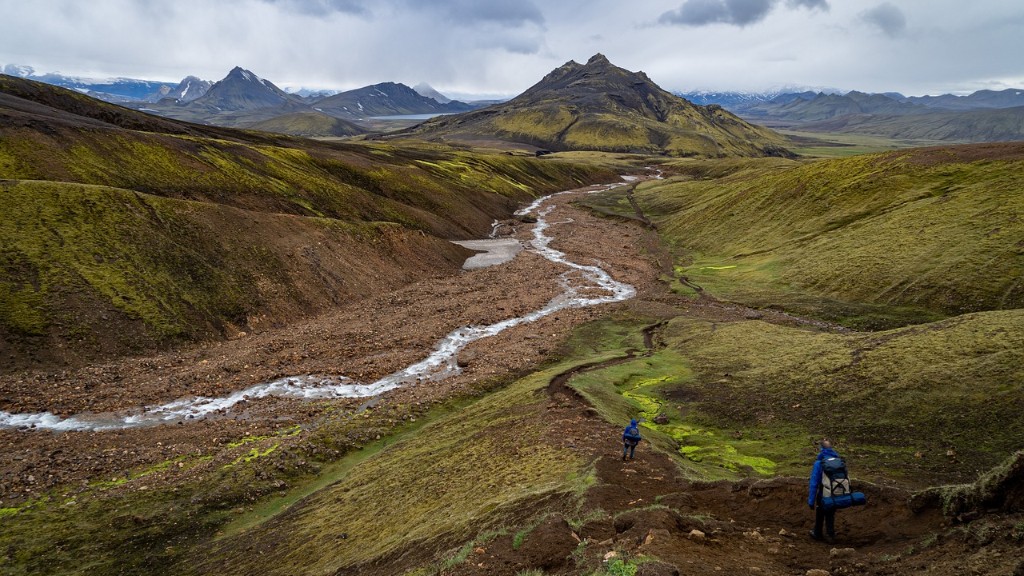The Nile River is the world’s longest and arguably most famous river, stretching 4,132 miles along ten African countries. As the river has been so heavily relied upon for centuries for transportation, irrigation, and bringing abundant nutrients for farmable land, it’s only natural to wonder if the Nile still floods today. In an age where it can be easy to fall victim to natural phenomenon and global warming, it is an understandable question, although the answer may not be so clear.
The most pressing natural event in the area is the flooding of the river each year, which is critical in providing fertile silt and moisture to the soil for crop production. This year, for instance, the annual floods exceeded expectations. The floods are weather dependent and typically arrive between June and August and are sourced over time with the waters of Lake Victoria, Lake Albert, and Lake Tana in Ethiopia. From June to September, any additional rain will cause the river to gradually rise, flooding the land along its banks. The flooding season typically creates half a meter of water, but this particular year it was estimated to reach over one meter by August.
The Egyptian government has taken various steps to alleviate the worst effects of the flooding, such as building dams, adjusting river courses and rerouting water during the wet season, and releasing water during the dry season. The Aswan Dam, constructed in 1970, has been particularly successful in providing electricity and water for irrigation, but it also reduced flooding downstream to the point of almost eliminating it.
Historically, the Nile would create a much larger flood, leaving behind a thick layer of nutrient-rich mud known as silt. This layer was crucial for keeping the land fertile for farming and for growing crops. But with the construction of the Aswan Dam, the annual floods have been greatly reduced in size, meaning the silt is no longer deposited on the land.
The reduction of the flooding has placed the onus on the farmers. In order to maintain the lands productivity, they must now take advantage of alternative fertilizer sources, while farmers downstream in Sudan are completely reliant on artificial fertilizer sources as the flooding has been completely eliminated. A recent article published by the World Economic Forum notes that the drop in fertility has been found to potentially have adverse effects on the local food security and water crisis in some areas.
The lack of annual floods has also had an impact on wildlife living in and around the Nile. Fish that depend on the oxygen and nutrients from the periodic flooding struggle to survive in the low-water environment. In addition, the marshlands of the Nile region, which served as a refuge for various species of birds and animals, have been drastically reduced due to the lack of flooding.
Despite these major effects upon the environment, there are some notable benefits that the Aswan Dam has provided. The dam supplies the majority of Egypt’s electricity, it prevents floods which can claim lives, and it provides irrigation that allows the country’s agricultural industry to thrive.
Effects of Flooding on Wealth of the Region
The flooding of the Nile River is closely linked to the wealth of the region it passes through. In Ancient Egypt, the annual floods were thought to resemble the god Hapy and were thus seen as a blessing from the gods. The floods were seen as a symbol of continued prosperity for the country and its people, and were closely related to how successful farming in the region could be.
Today, the natural flooding of the Nile is a very different story. In some parts of Africa, there has been a decrease in agricultural production due to a lack of fertile soil, caused by the lack of flooding. There also has been a decrease in the productivity of fisheries. This has resulted in a decrease in income for many people living in the Nile Valley region and surrounding countries, with some locating to cities in search of better opportunities.
There is also an increased reliance on artificial fertilizers, which can be costly and may not be as effective as the natural nutrients which the river’s floods used to provide. This creates an additional burden on farmers, who are already feeling the impacts of decreased rainfall due to climate change. While the Aswan Dam provides many benefits, the need for other solutions that can provide the region with the same levels of fertility and, ultimately, wealth as it did historically is clear.
The Role of Technology in Reducing Water Loss
Technology has the potential to help reduce water loss from the Nile. This could be done through efficient irrigation systems and modern hydrological systems that would better manage the water resources of the Nile. Such systems could be designed to respond to climate and hydrological changes, helping farmers to better regulate their crops and reduce the amount of water used for irrigation. This would also reduce the need for expensive artificial fertilizers, thus saving the farmers money.
Furthermore, digital tools and artificial intelligence can be used to create better predictive models for predicting and predicting the river’s behavior. This could help better inform farmers of the best times to plant and irrigate their crops, ultimately leading to wiser use of resources. Predictive models can also be used to inform the governments of the region which areas need to be targeted to better manage water resources and reduce water loss.
Economic Impact of the Aswan Dam
The Aswan Dam has helped to boost the economy of Egypt, by providing renewable energy, providing irrigation, and by reducing the risk of flooding in the lower reaches of the Nile. This has enabled more efficient farming and improved the country’s infrastructure. Furthermore, it has allowed for easier transportation of goods and people up and down the river. The electricity produced by the dam has also provided a more reliable and cheaper source of energy for homes, businesses, and industry.
However, the dam has caused both environmental and economic losses. The reduced flooding has lead to a decrease in the amount of natural fertility in the fields and has impacted the livelihoods of some of the farmers. In addition, the dam has affected fish and bird populations in the Nile Valley and has increased water salinity. This has harmed the fishing industry and has caused damage to some local ecosystems.
Overall, the benefits of the Aswan Dam are clear, however, there is a need to continue to research better ways to manage the river’s resources. By promoting sustainable agriculture and investing in technologies that can better manage irrigation, the impacts of climate change can be reduced and the livelihoods of the people living in the Nile Valley can be improved.
River Management and Country Cooperation
The management of the Nile River is a shared responsibility between the countries it passes through. In order to ensure that its resources are well managed, countries must cooperate so that decisions can be taken for the benefit of everyone involved. This cooperation can be strengthened through treaties, such as the 1959 Nile Agreement, which called for the exchange of information and cooperation between countries.
In recent years, the countries have been working together to address the changing environment, water resources, and energy needs in the region. Various initiatives have been taken to develop better management systems, increase water efficiency, and reduce water waste. However, more needs to be done to ensure that the benefits of the Nile are distributed throughout the region.
For instance, the Nile Basin Initiative (NBI) is an example of a regional initiative that Worked towards increasing cooperation between countries. It is a subsidiary of the African Union and its programmes focus on water-related issues, water allocation, and investment in infrastructure. This has been an important step towards a more collaborative approach to shares of resources and addressing the changing climate of the region.
The Role of Development Aid in River Preservation
Given that many countries in the Nile Valley lack the resources to invest in water-preserving initiatives, there is an important role for development aid to play. Development aid helps countries with weak or limited economies to develop the necessary infrastructure and technologies to better manage their water resources. This includes funding for agricultural research, water infrastructure investments, and the construction of dams.
In addition, there are initiatives such as the Nile River Basin Program which support the development of integrated water resources management plans, the improvement of water governance, the promotion of water use efficiency, and the expansion of community involvement in the management of water resources. This kind of aid can go a long way in helping to protect and preserve the Nile.
Development aid can also be a great resource for implementing water conservation practices such as rainwater harvesting and water reclamation. These efforts aim to reduce water consumption and mitigate the pressure upon the river itself. As water scarcity is a growing issue, these kinds of initiatives are becoming more important throughout the world.
Conclusion
In conclusion, the Nile River still floods today, although at a much reduced level than in centuries past. This is due largely to the construction of the Aswan Dam and its effects are felt throughout the region, both in terms of ecology and the local economy. While the dam has many benefits, there is a need to invest in water-saving technologies and development aid in order to ensure the survival and prosperity of the region. The countries of the Nile Valley must work together to manage the river’s resources in a way that benefits everyone and protects the fragile environment of the region.





